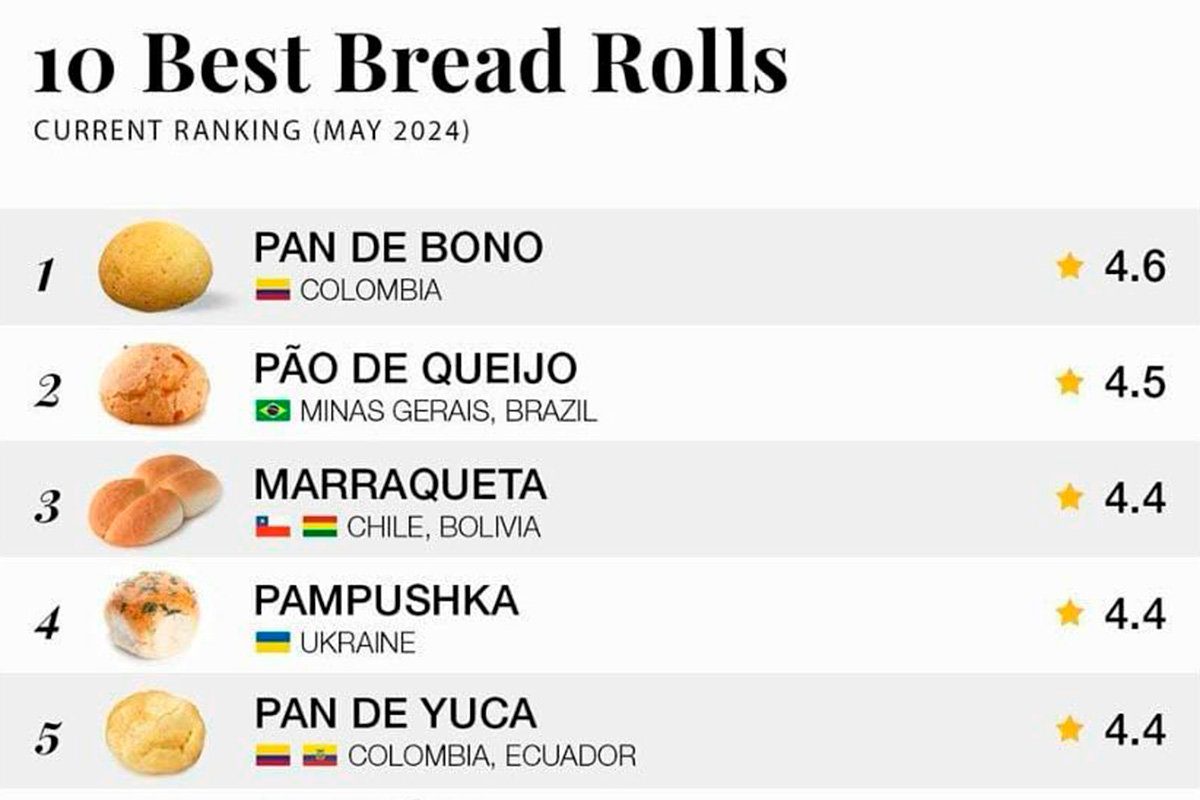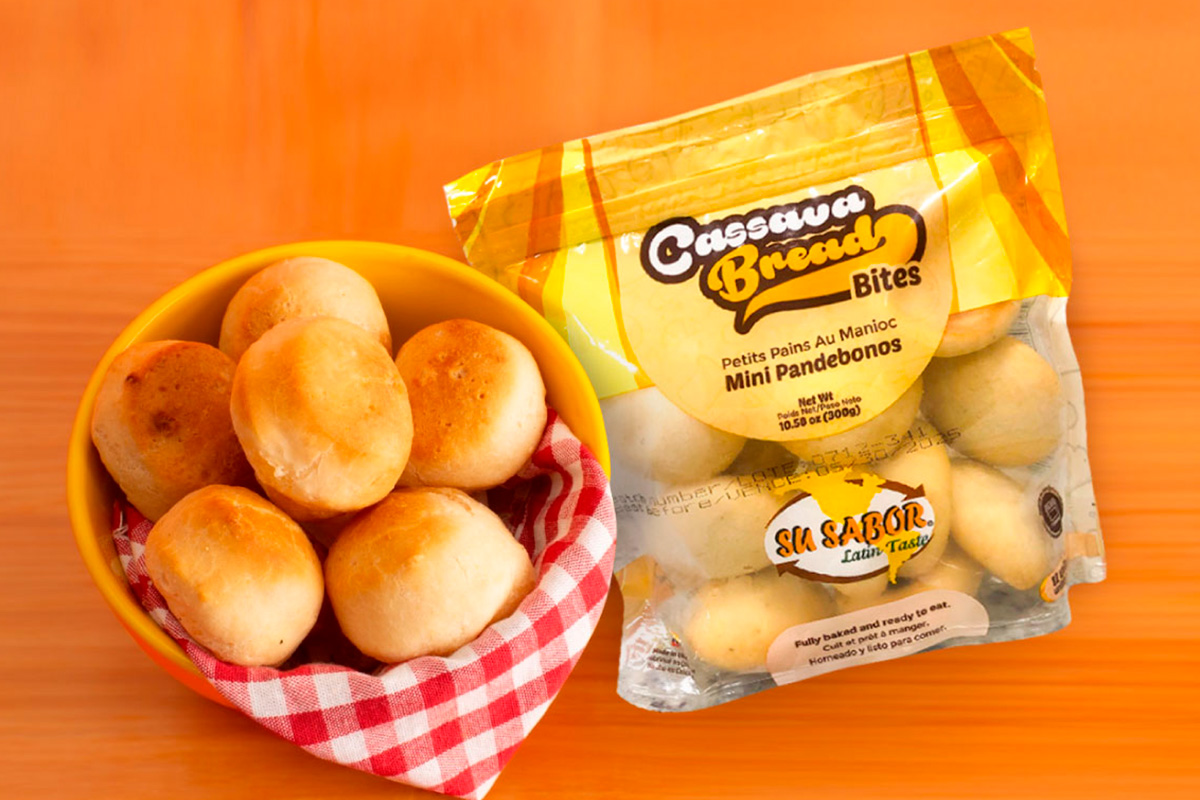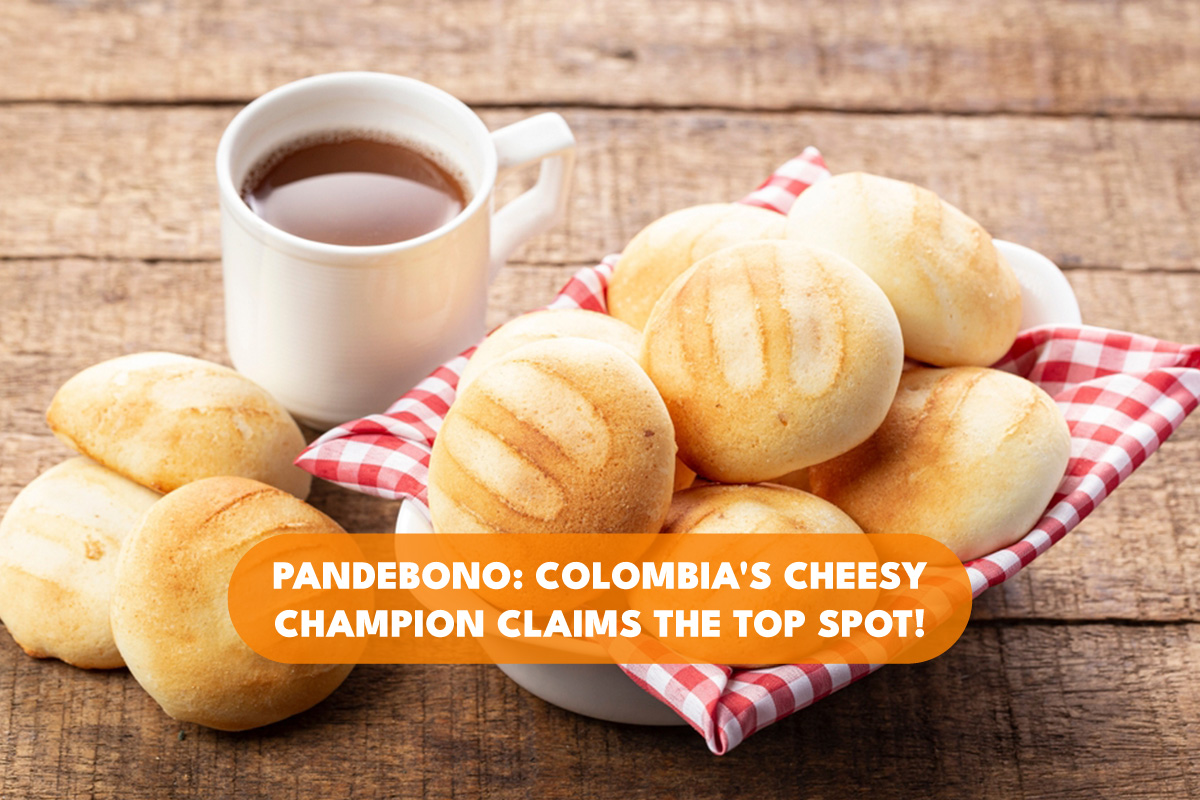The world of bread is vast and wondrous, boasting an incredible variety of shapes, flavors, and textures. From the crusty baguettes of France to the fluffy naan of India, bread has served as a cornerstone of global cuisine for centuries. But recently, one particular bread has risen above the rest, claiming the coveted title of the world’s best: Colombia’s very own pandebono.
This exciting news comes courtesy of Taste Atlas, a renowned authority on global gastronomy. Their recently released ranking of the world’s top ten breads saw pandebono take the crown, much to the delight of Colombia and bread enthusiasts everywhere. Here, we delve into the world of pandebono, exploring its history, unique characteristics, and of course, its recent recognition as a culinary champion.
A Taste of History: The Rise of Pandebono

Pandebono, also known as pan de bono, is a quintessential Colombian bread originating from the Valle del Cauca region. Its name is believed to derive from “pan de bono,” which translates to “bread of bono.” The term “bono” is thought to refer to the Italian word for “good” (buono), highlighting its delightful taste. Another theory suggests that the name comes from the bono cheese used in its preparation.
The traditional recipe for pandebono includes cassava starch (yuca flour), cheese (often costeño cheese), eggs, and a touch of cornmeal. This combination creates a uniquely textured bread that is crispy on the outside and soft and chewy on the inside. Over the years, pandebono has become a beloved staple in Colombian households, often enjoyed fresh out of the oven with a cup of hot chocolate or coffee.
The Allure of Pandebono: What Makes it Special?
So, what exactly makes pandebono so special? The answer lies in its unique combination of ingredients and textures. Here’s what sets this Colombian champion apart:
- Simple Ingredients: Pandebono boasts a refreshingly short list of ingredients. Cassava flour, a naturally gluten-free flour derived from the yuca root, forms the base, providing a slightly sweet and slightly crumbly texture. Eggs, butter, and cheese are then added, creating a rich and savory dough. This simplicity allows the natural flavors to shine through, making it a versatile bread that can be enjoyed on its own or paired with various sweet and savory accompaniments.
- Delightful Texture: The cassava flour gives pandebono a distinct texture. Unlike the chewy texture of wheat-based breads, pandebono offers a delightful crumbliness that melts in your mouth. The cheese, typically Queso Fresco, adds a touch of creaminess and a salty depth of flavor that perfectly complements the starchy foundation.
- Flavor Profile: Pandebono offers a delightful balance of flavors. The subtle sweetness of the cassava flour mingles with the richness of the cheese and a touch of saltiness for a truly satisfying taste experience. This combination makes it perfect for those who enjoy both sweet and savory flavors.
- Gluten-Free Goodness: For those with gluten sensitivities or celiac disease, pandebono presents a delicious and worry-free option. The cassava flour naturally replaces wheat flour, making it a safe and enjoyable bread for everyone to experience.
Pandebono Takes Center Stage: The Taste Atlas Triumph
The recent ranking by Taste Atlas placed pandebono at the top of the list, solidifying its global appeal. This achievement highlights the rich culinary heritage of Colombia and showcases the unique flavors that the country has to offer. Scoring a remarkable 4.6 out of 5, pandebono reigned supreme, leaving other delicious breads like the Brazilian pão de queijo and the Chilean and Bolivian marraqueta trailing closely behind.
This recognition speaks volumes about the enduring popularity of pandebono and its ability to capture the hearts (and taste buds) of people worldwide. It’s a testament to the ingenuity and creativity of Colombian cuisine, and a reminder that the simplest ingredients can combine to create something truly special.
Bringing the Taste of Colombia Home: SuSabor Latin Taste

At Su Sabor Latin Taste, we are passionate about sharing the vibrant flavors of Latin America with the world. We understand that not everyone can travel to Colombia to experience the magic of pandebono firsthand. That’s why we offer a variety of convenient and delicious ways to bring the taste of Colombia home:
- Frizado Mini Pandebonos (Cassava Bread Bites): These bite-sized delights are perfect for those who crave a quick and satisfying snack. Pre-baked and frozen for your convenience, all you need to do is pop them in the oven for a few minutes to enjoy their warm, cheesy goodness.
- Mezcla Lista Pandebonos (Cassava Bread Mix): For those who love baking at home, our pandebono mix provides an easy and convenient way to make fresh pandebono in your kitchen. Simply follow the instructions, and you’ll have warm, cheesy bread ready to enjoy.
Beyond the Pandebono: Exploring Colombia’s Bread Basket
Colombia’s triumph with pandebono is just one highlight of the country’s diverse and delicious bread scene. The Taste Atlas ranking included four Colombian breads in the top ten, showcasing the rich tapestry of baking traditions within the nation. Here’s a glimpse into some of Colombia’s other notable breads:
- Pan de Yuca: This simple yet satisfying bread is made primarily with yuca flour and cheese. Similar to pandebono, it offers a delightful crumbly texture and a slightly sweet flavor profile.
- Almojábana: This bread, shared by Colombia and Puerto Rico, boasts a slightly denser texture than pandebono. It’s typically made with a combination of wheat flour, cheese, and eggs, and can be enjoyed plain or topped with butter, jam, or cheese.
- Pan de Queso: While the name translates to “cheese bread” just like pandebono, pan de queso offers a distinct experience. It typically uses wheat flour and features a softer, more doughy texture compared to the crumbly pandebono.
These are just a few examples of the many delicious breads that Colombia has to offer. Each region boasts its own specialties, reflecting the unique ingredients and traditions of the area.
A Celebration of Global Breadmaking Traditions
The Taste Atlas ranking serves as a delightful celebration of global breadmaking traditions. From the fluffy pita breads of the Middle East to the dense rye breads of Northern Europe, each culture has its own unique way of crafting this essential food. The inclusion of breads from various corners of the world highlights the diversity of flavors and textures that bread can offer.
Pandebono’s reign at the top of the list is a testament to the creativity and resourcefulness of Colombian cuisine. It’s a reminder that simple ingredients, when combined with love and tradition, can create a truly exceptional culinary experience.
The Final Bite: A World of Flavor Awaits
Whether you’re a seasoned bread enthusiast or simply curious to explore new flavors, the world of bread offers a delicious adventure. From the familiar comfort of your favorite sandwich bread to the exotic delights of pandebono, there’s a bread out there waiting to tantalize your taste buds.
So, the next time you’re looking for a satisfying snack or a delightful addition to your meal, consider venturing beyond the ordinary. Explore the diverse world of breads, and discover the hidden gems like Colombia’s champion pandebono.
And remember, if you’d like to bring the taste of Colombia home, Su Sabor Latin Taste is here to help. With our Frizado Mini Pandebonos and Mezcla Lista Pandebonos, you can easily enjoy the magic of pandebono anytime, anywhere.
We hope this blog post has piqued your interest in the wonderful world of pandebono and Colombian breads. So, what are you waiting for? Grab a pandebono, savor its unique flavor, and celebrate the global art of breadmaking!




